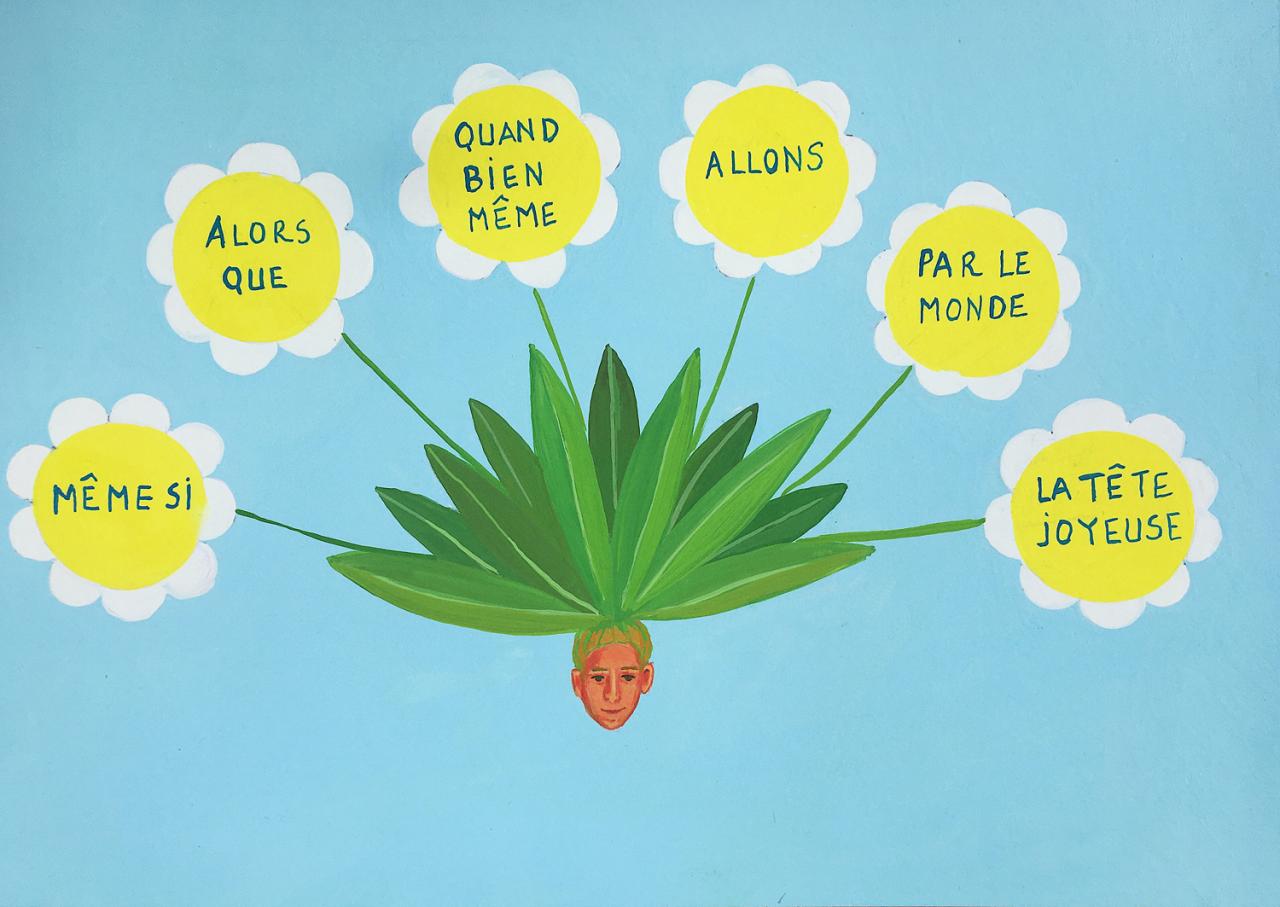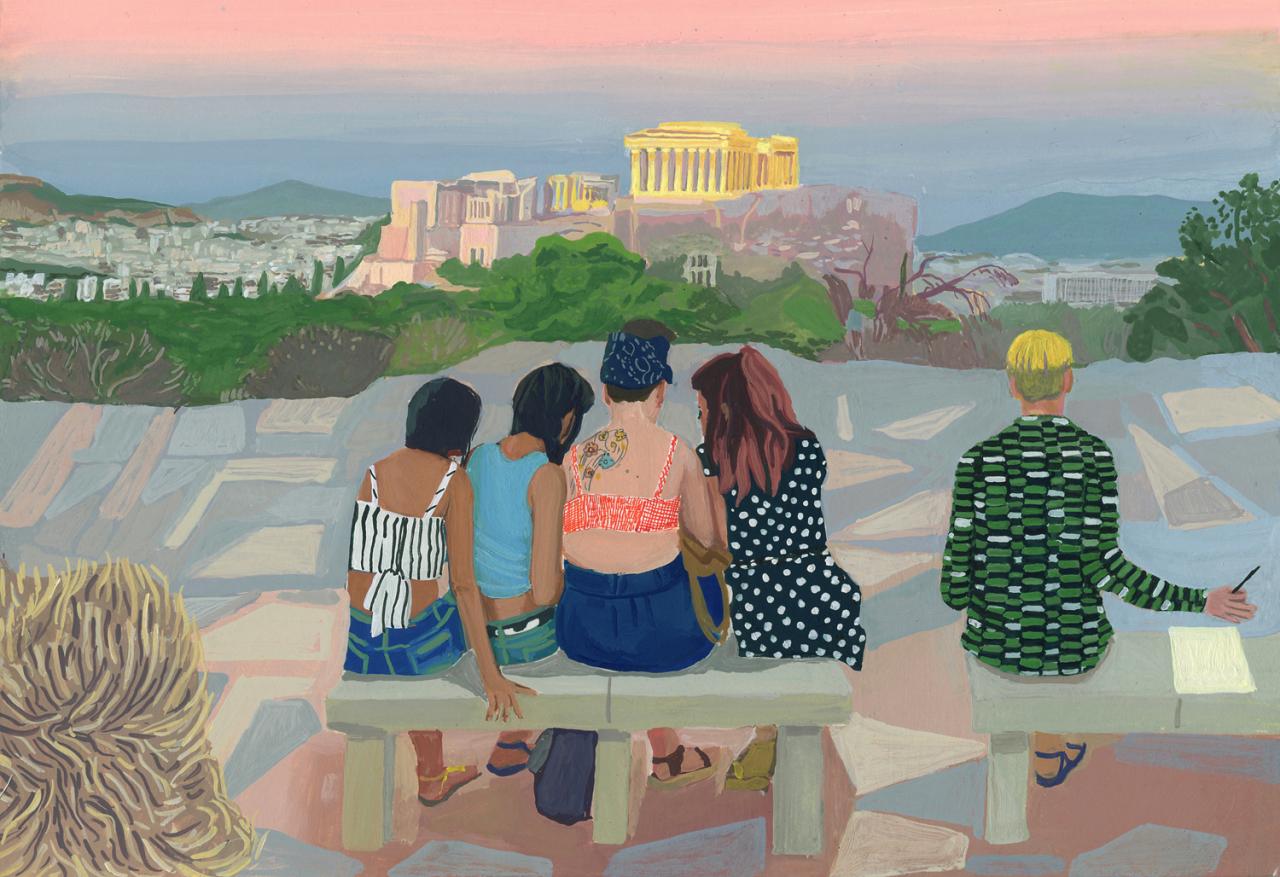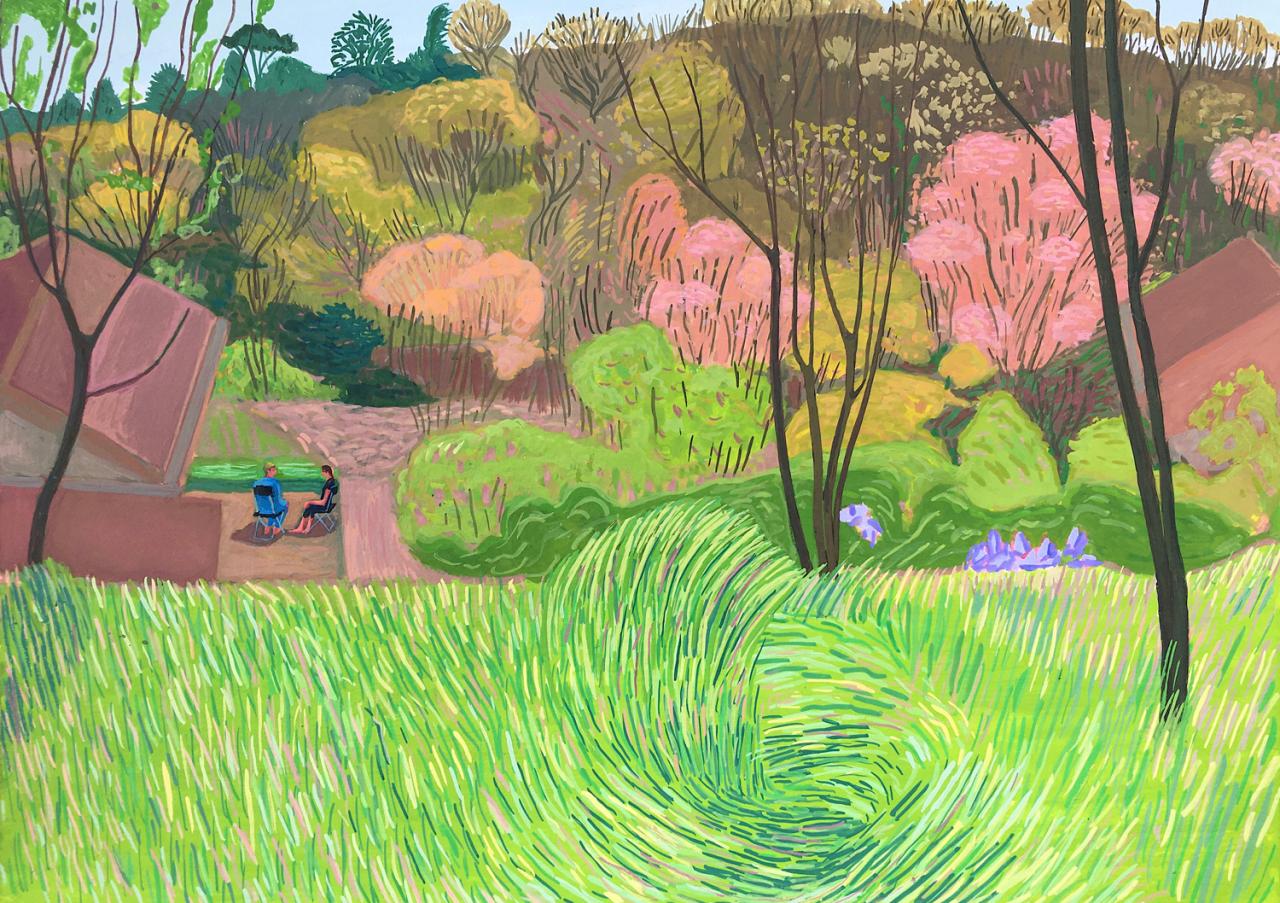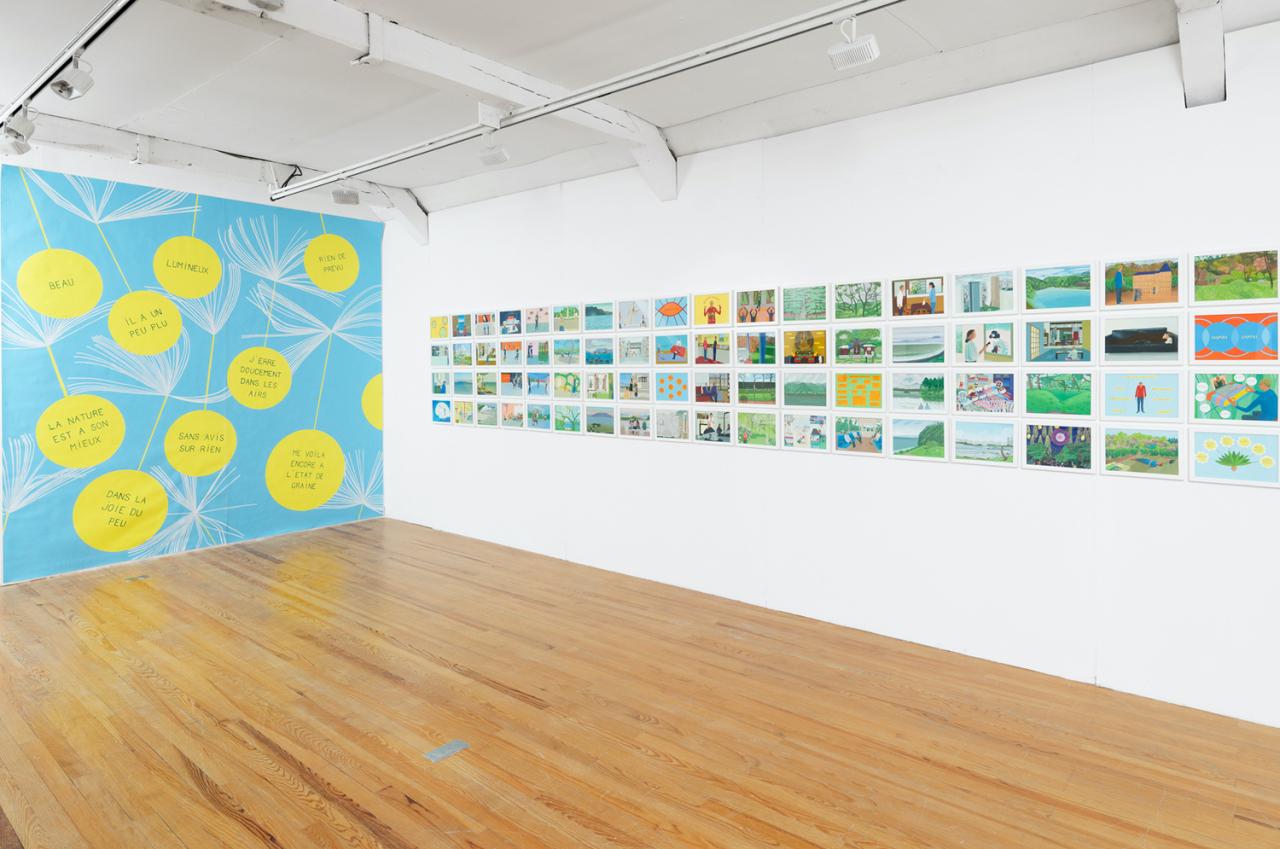Marie-Claire Mitout
Born in
Lives and works in Lyon




"Marie-Claire Mitout’s Les Plus Belles Heures [The Most Beautiful Hours] present themselves as simple scenes, moments of life, places and situations observed and rendered in the form of a long and stunning catalogue of small gouaches on paper.1 The subjects of these paintings are diverse but recurrent: landscapes, groups of people in outdoor or indoor settings, intimate life moments like meals, bathing or naps, as well as visits of cultural sites. However, all the motifs that punctuate this vast ensemble are not addressed in the same manner; other than the fact that the extended timeline of the work, which began in 1990, should naturally account for its stylistic evolution, this diversity mostly manifests through the variety of viewpoints adopted and their visual manifestations. Sometimes presented as single views, they convey a contemplative moment at a given location or the emotion felt at a particular time; in other paintings, the artist uses a series of interlocked frames to combine the various elements that conjured up the memories, which in turn prompted the desire to paint the image. In any case, all of them are depictions after the fact. While some seem based on a tangible visual aid, others are clearly mental reconstructions, pure compositions that seek less to convey the realistic aspect than the atmosphere of a given context, an encounter, and the feelings associated with them. And so, from picture to picture, we find ourselves facing – or rather, invited to participate in – a permanent breach between the objectivity and subjectivity of the artist’s viewpoint.
The Most Beautiful Hours – a title unmistakably reminiscent of medieval books of hours, and which openly signifies a graphic connection to them – is a stunning project that translates into visuals the highlights of the artist’s everyday life. The almost permanent presence of a figure that bears her own features seems to support this point of view unambiguously. Whether seen from the back, sideways, face-on, standing or sitting, the depictions of the artist and her friends and relatives introduce us to, invite us to share, and perhaps to relive, these chosen moments. The one who paints the picture, or depicts the situation, is simultaneously a person and a character in it. She sees, sees herself, and is seen, and is therefore the one who has experienced what we see and who lets us see it. […]
Carrying around her own personal witness from year to year in The Most Beautiful Hours, Marie-Claire Mitout strives to retrace the trajectory of a life that looks or might perhaps look a little like hers. However, while her body of work is informed by whatever affects her as a person and as an artist, and while she partially recounts her existence without reproducing it, there are also cases where the work seems animated by an inner force and generates events or directions that inspire the artist to take new steps. Marie-Claire Mitout has determined that it is from the artwork and through the artwork that new paths will open. She chooses to believe in the reality of the dreams that painting has to offer.
1.The size of each painting is 19.5 x 28 cm approximately, presented horizontally.
Excerpt from Claires réalités [Clear realities], Philippe Agostini, Roven magazine, 2019
© Adagp, Paris